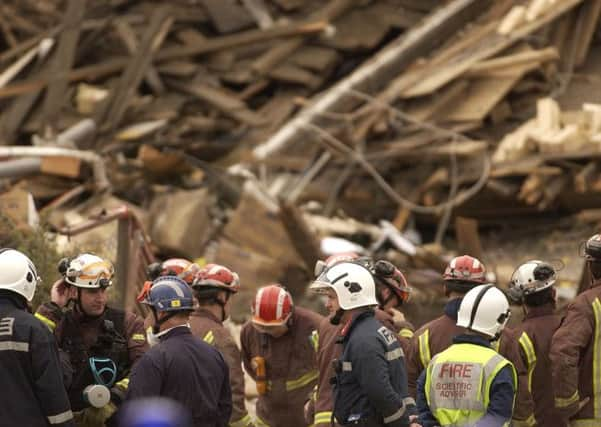Five-year rule over compensation claims for damages has important exemptions


AS THE old saying goes, timing is everything. In law, it can make all the difference between success and failure – even when the bare facts suggest otherwise.
Only a few weeks ago, the costly importance of timing was highlighted in the Supreme Court case of David T Morrison & Co Ltd (trading as Gael Home Interiors) v BLM’s client ICL Plastics Ltd.
Advertisement
Hide AdAdvertisement
Hide AdOn 11 May, 2004, Morrison’s premises in Maryhill, Glasgow, sustained substantial damage when the Stockline plastics factory exploded. Factory owner ICL Plastics admitted liability for the disaster, which was caused by petroleum gas igniting in a corroded pipe.
Nevertheless, when Morrison served proceedings against ICL Plastics in August 2009 for £1.5 million, the Outer House of the Court of Session initially dismissed the claim.
Under Scots Law, the time that someone has to raise a claim is governed by the Prescription and Limitation (Scotland) Act 1973. Claimants seeking damages for losses sustained as a result of property damage usually have five years within which to raise proceedings.
As a general rule, the prescriptive period starts on the date which the loss, injury or damage occurred. ICL claimed Morrison only had until 11 May, 2009 – exactly five years after the explosion – to launch a legal bid and had therefore missed the deadline by three months.
In turn, Morrison argued that its claim had not prescribed because an important exemption to the rule applied. They believed the five-year period only started when the cause of the explosion had been confirmed as the fault of ICL. As this had not been established until 13 August, 2004, when experts were able to inspect the premises and provide a report, they believed their bid for compensation was valid.
When the initial ruling was later overturned by the Scottish Appeal Court, ICL decided to take their case to the Supreme Court. The outcome ultimately hinged on when the clock started ticking. Was it on the date of the incident itself or when the cause of the disaster was confirmed?
In order to answer this technical conundrum, the judges at the Supreme Court turned to Section 11(3) of the Prescription and Limitation (Scotland) Act 1973 – the special exemption Morrison was relying on. Here the act states that the five-year period can be delayed where a claimant was not aware, and could not with reasonable diligence have been aware, that it had suffered a loss.
Morrison interpreted this as meaning the prescriptive period could not begin until it had suffered a loss and established that the loss had been caused by ICL. In turn, ICL believed that simply being aware of the loss in the first instance was sufficient for the prescriptive period to begin.
Advertisement
Hide AdAdvertisement
Hide AdUltimately the court ruled in favour of ICL by a majority of three to two. From now on, all that is required for the clock to start ticking is knowledge that damage has been sustained. Awareness of the cause of the loss, injury or damage is not required for the prescriptive period to commence.
Lord Hodge, one of the five Supreme Court Justices involved in the ruling, suggested that Scottish Law Commission proposed amendments to the law on the issue should be re-visited.
Produced back in 1989, these recommendations, when implemented, could help to clarify the law. Yet anyone currently pursuing or defending a claim where prescription could be an issue would be wise to check if the judgment affects their claim. Those who are considering pursuing a claim might now have to deal with the fact that their time to act could run out a lot quicker than they thought.
The change in interpretation also has implications for practitioners of the law. Solicitors need to be certain they know exactly when a prescriptive period starts and the implication this has for their client. If it turns out to be wrong and the client loses a right of action, the client could make a claim against them – even in cases where prior advice was based on relevant case law.
Although the Supreme Court decision turned on a narrow point of statutory interpretation, the outcome will have a major impact.
If you suffer damage to your property and want to seek compensation, it’s important to start investigating the facts and establish a cause as soon as possible. As cases such as these demonstrate, even in the world of the law, time never stands still. • Tony Murray is a partner with BLM www.blmlaw.com
SEE ALSO